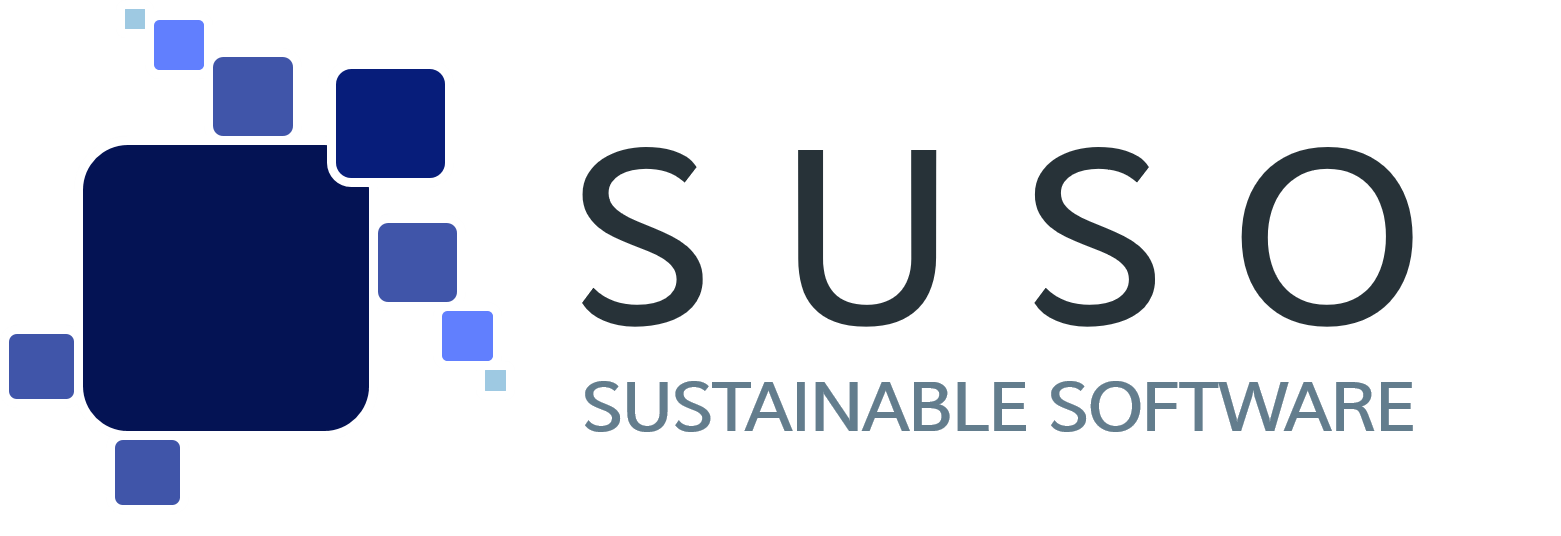IoT (Internet of Things) and sustainability: How connected devices can help reduce energy consumption
In times of growing environmental impact and dwindling resources, sustainability has become an important issue. The IT industry has also recognized that it must make a contribution to sustainability. One technology that plays a central role in this is the Internet of Things (IoT). Networked devices can not only help reduce energy consumption, but also make processes more efficient and thus save resources. Here you can find out why IoT and sustainability belong together.
What is IoT?
IoT stands for “Internet of Things”. The concept refers to the idea that everyday objects that are not normally connected to the Internet can communicate with each other and exchange data via sensors, actuators and other electronic components.
The goal of the IoT is to connect the physical world with the digital world, creating new opportunities to optimize processes and make life easier and more efficient. For example, a refrigerator and smartphone could communicate with each other to organize shopping, or smart lighting could automatically turn lights on and off based on the occupants’ location.
The IoT is a rapidly growing field and is expected to play an increasingly important role in the future as more and more devices and objects are integrated into our everyday lives.
The contribution of IoT to sustainability
IoT offers numerous opportunities to reduce energy consumption and thus contribute to sustainability. Networked devices, for example, can help optimize the energy consumption of buildings by automatically regulating lighting, heating or air conditioning. This can reduce energy consumption by up to 30 percent, depending on the source.
Another use case of IoT in sustainability is smart grids. Connected power grids can optimize the flow of energy by automatically matching power demand to power generation. This reduces the need for fossil-fueled power plants and thus helps reduce CO2 emissions.
IoT can also make an important contribution to sustainability in the area of mobility. Connected vehicles, for example, can help optimize the flow of traffic and thus avoid traffic jams and unnecessary journeys. This not only saves time and resources, but also reduces pollutant emissions.
Other application examples of IoT in the area of sustainability include monitoring environmental conditions such as air quality or water consumption, as well as the efficient use of agricultural resources through networked fields.
Overall, IoT thus offers numerous opportunities to reduce energy consumption and thus contribute to sustainability. So many that we cannot even list them all here.
Challenges in the implementation of IoT in the area of sustainability
The integration of IoT solutions into existing systems in the area of sustainability poses various technical, economic and social challenges.
One technical challenge is that the various networked devices and systems are often based on different standards and protocols. This makes integration and interoperability between systems difficult.
Another challenge is the security of networked systems. Networked devices can be vulnerable to cyberattacks, which can lead to data loss and downtime. Here, security measures must be taken to safeguard the systems.
Furthermore, the cost-effectiveness of IoT solutions plays a role in sustainability. The cost of implementing and maintaining such solutions can be high, which can limit adoption and diffusion of the technology.
To overcome these (and other) challenges, solution approaches must be found:
One way is to establish uniform standards and protocols for networked devices to improve interoperability. Remotely, security measures can be built into systems to ensure they are regularly updated.
To increase the cost-effectiveness of IoT solutions in the area of sustainability, costs must be reduced. Government incentives or subsidies, for example, can help here. In addition, the use of open standards and open source software can reduce costs.
Finally, social aspects must also be taken into account. Here it is important to analyze the impact of IoT solutions on jobs and social structures and, if necessary, to take measures to minimize this impact.
Use our tools for sustainable software
Our three tools help you acquire the knowledge, skills, and financial resources you need to develop sustainable software products and services that meet social, environmental, and economic needs. By using these tools, you can position yourself as a leader in sustainable software development and help create a better future for all.
Best practices for the implementation of IoT projects in the field of sustainability
There are already numerous successful projects and initiatives that use IoT technologies to improve sustainability. One example is the “Smart Grid” concept, which aims to optimize energy consumption by linking energy production and consumption in real time. Another application is the “smart home” concept, which optimizes energy consumption in homes by using networked devices to monitor and control energy use.
If you are a software company or practitioner looking to implement such a project, there are some tips and recommendations to keep in mind:
- Identify the right problem: Carefully analyze where and how IoT technologies can be used to improve sustainability. Identify and focus on the areas where the greatest savings can be made.
- Leverage existing infrastructure: Consider whether you can leverage existing infrastructure to simplify the implementation of IoT solutions and reduce costs. For example, you can leverage existing networks and cloud solutions.
- Ensure security: Consider security aspects from the outset when developing IoT solutions. Implement robust security measures and make sure they are updated regularly.
- Collaborate: IoT technologies often require collaboration among various partners and stakeholders. Ensure that collaboration is effective and establish clear responsibilities. In the smart cities space, for example, a participatory approach would be recommended.
- Consider sustainability: Consider sustainability aspects in all phases of the project, from design to implementation and maintenance. For example, consider the environmental impact of the devices and ensure they are properly recycled at the end of their life cycle.
By implementing these best practices, you can ensure that your IoT projects are successful in sustainability and make a positive contribution to the environment.
Sustainability and IoT: Examples of successful projects
There are already numerous successful IoT projects that help to improve sustainability. One example is the “Smart Transportation” project, which aims to optimize traffic in order to reduce emissions. Another example is the “Smart Agriculture” project, which helps farmers optimize water consumption and fertilizer use to minimize environmental impact.
A particularly successful project in the area of sustainability is the “Smart Grid” concept. This is a network of interconnected devices that aims to improve energy efficiency and maximize the use of renewable energy. The smart grid allows energy consumption to be dynamically adjusted to the availability of renewable energy such as solar or wind power.
Smart Home envisions using networked appliances in the home to optimize energy consumption. For example, heating and air conditioning can be automatically regulated to reduce energy consumption. Lighting can also be turned on and off automatically to minimize power consumption.
In terms of IoT technologies to improve sustainability, there is also “smart waste management.” This is a system for monitoring waste bins that improves the efficiency of waste disposal and minimizes the use of resources.
These examples show how IoT technologies can be used to improve sustainability. They illustrate that networked devices can help increase energy and resource efficiency and minimize environmental impact.
Smart home as an example of the road still to be travelled towards IoT and sustainability
Since this topic seems to be the most important today, it deserves its own section. Smart home systems are often cited as an example of using IoT technologies to improve sustainability. The idea behind this is that networked devices in the home can help optimize energy consumption and thus save resources. However, there are also critical voices that argue that smart homes are not always sustainable.
A key argument for smart homes as a sustainable technology is that they can help reduce energy consumption. For example, networked thermostats and lighting systems can be programmed to operate only when needed. This not only saves energy, but also money and resources. One important point of criticism concerns the fact that networked devices in the smart home are often permanently switched on. This means that they consume electricity even when they are not actively being used. This contradicts the original argument for smart homes as a sustainable technology.
In addition, justified criticism arises in the production and disposal of smart home devices. These often require rare and valuable raw materials that are only available in limited quantities. The disposal of smart home devices can also be problematic, as they are often not recyclable and thus lead to environmental pollution.
It is important to take these criticisms seriously and find solutions to improve the sustainability of smart home systems. One possible solution could be to design devices so that they are only active when they are needed. The use of recycled materials and the development of recyclable products could also help to minimize the environmental impact of smart home systems.
IoT and Artificial Intelligence
IoT and AI (artificial intelligence) are closely linked. The IoT offers the opportunity to collect an enormous amount of data collected by sensors and other devices in the physical world. AI algorithms can then analyze this data and identify patterns that indicate specific behaviors or needs of users.
IoT and AI (artificial intelligence) go together because together they can help reduce energy consumption and the environmental impact of technologies. However, there are pitfalls here as well. For this, you should definitely be familiar with the term Green AI. Click here to learn more about this topic.





